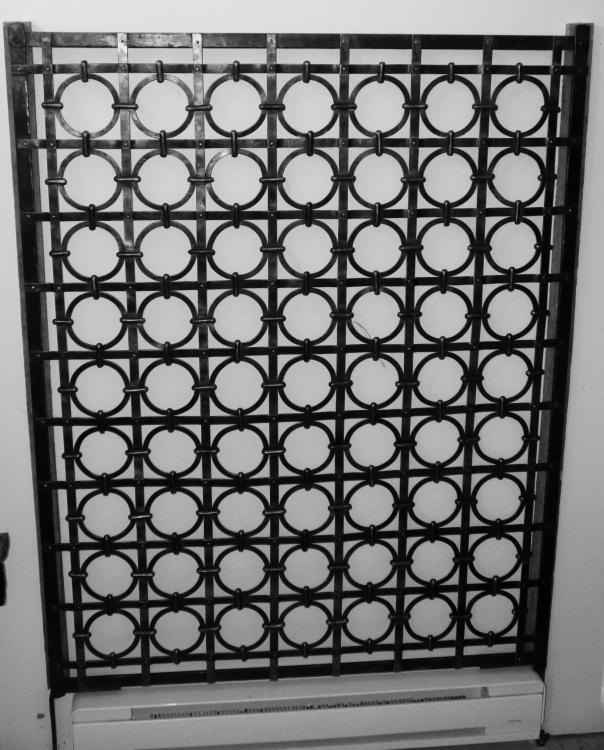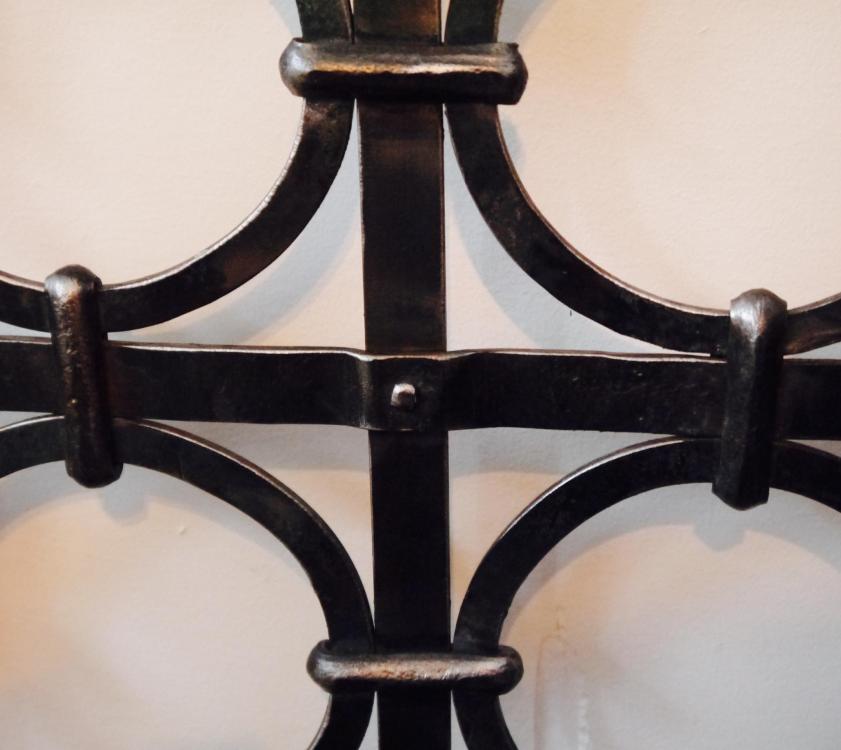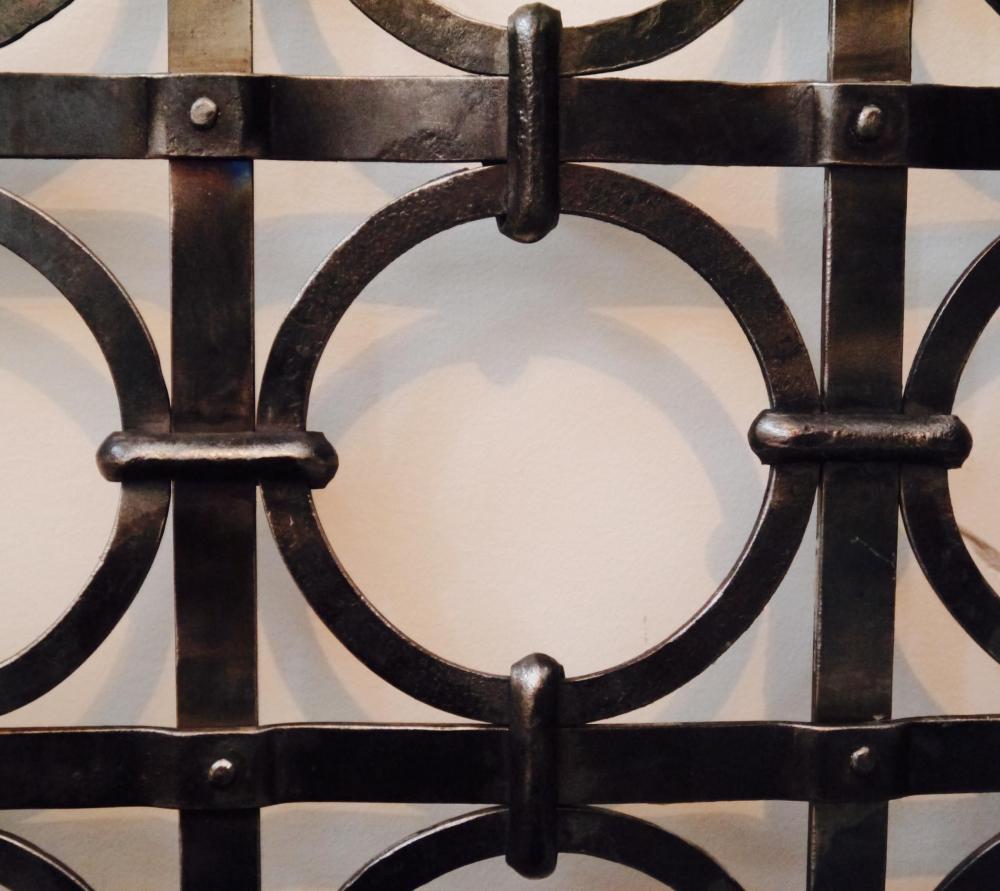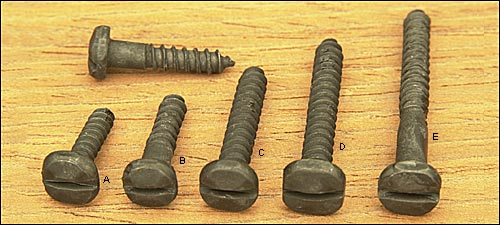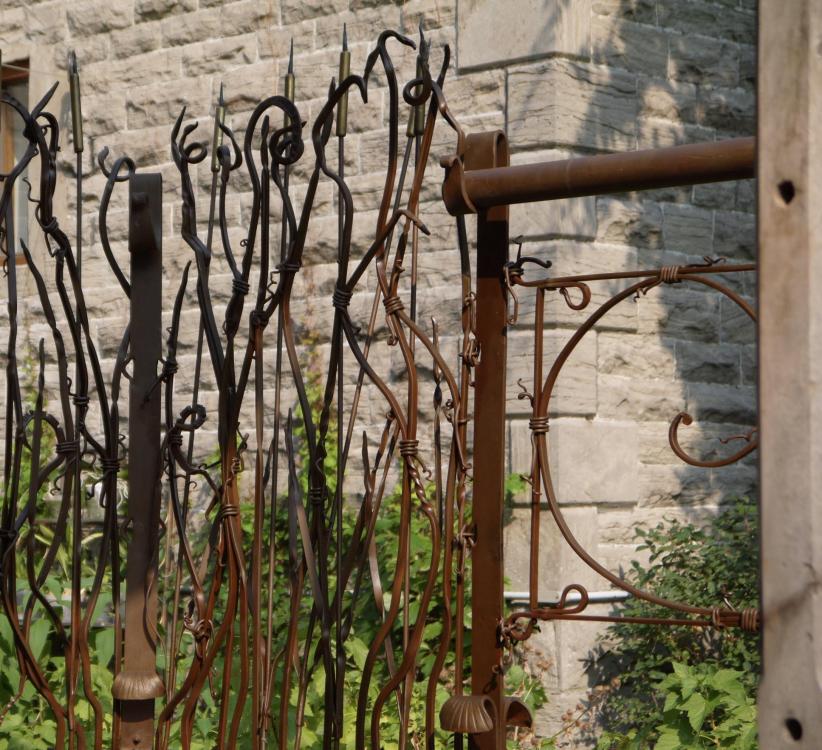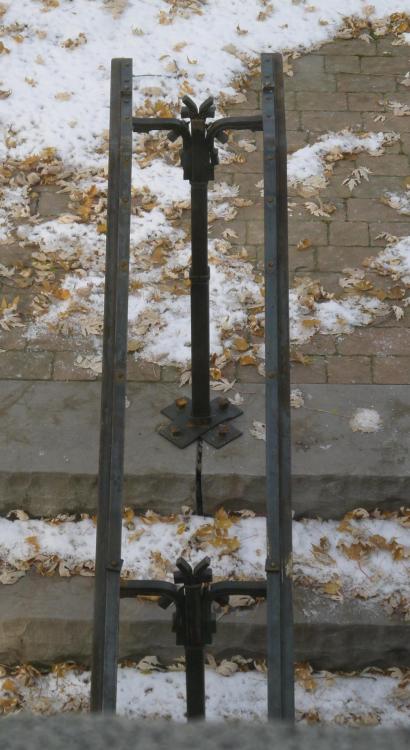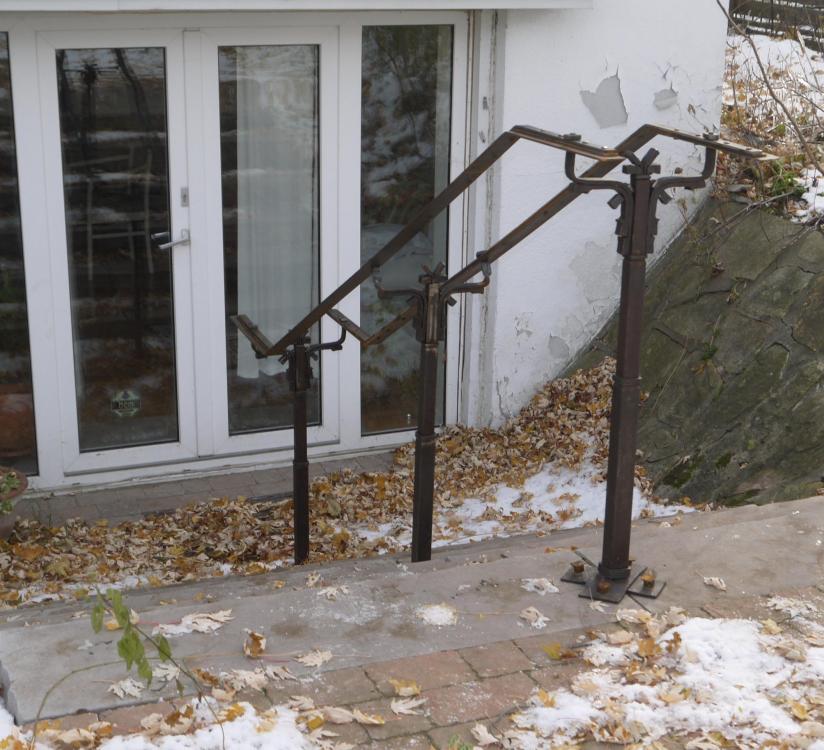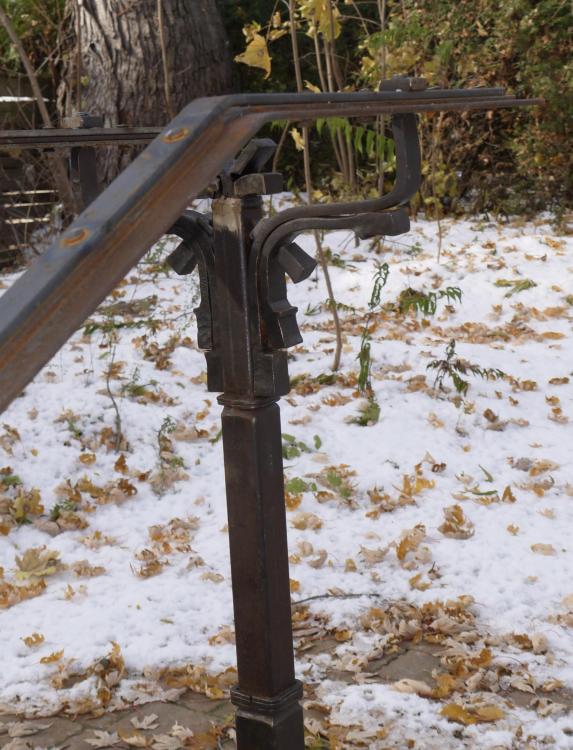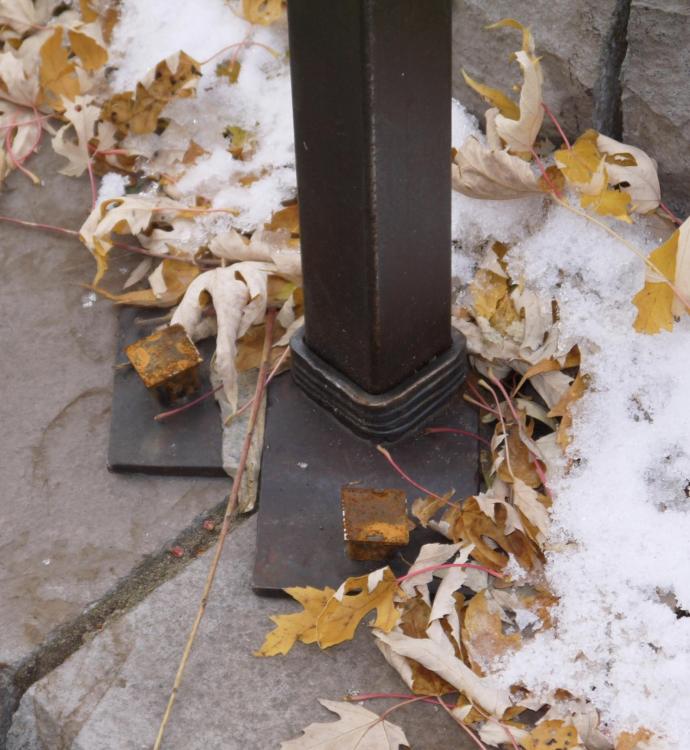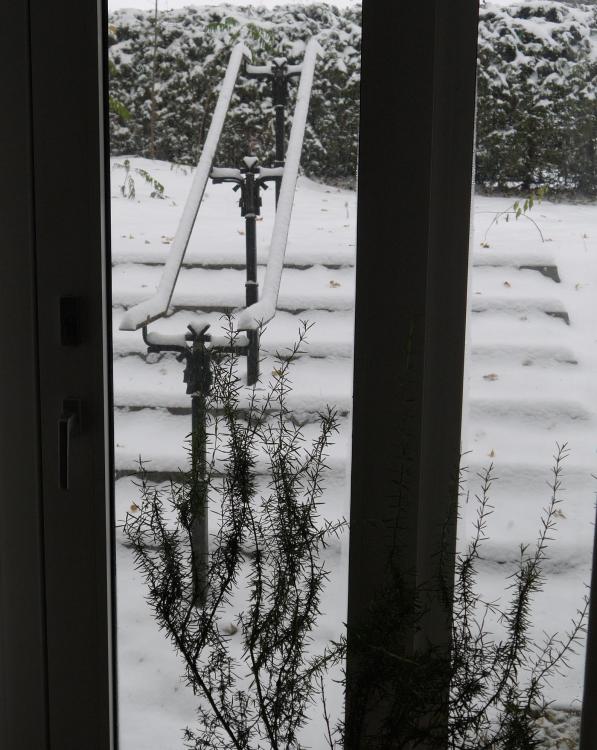-
Posts
564 -
Joined
-
Last visited
Content Type
Profiles
Forums
Articles
Gallery
Downloads
Events
Everything posted by yves
-
I will get back to you on this. Irondragon, very happy you liked it. Dimensions : height 49-1/16". The height was not crucial. Width, 39-1/16". I could not be more than 40" and less than 38". Daswulf and JHCC, thanks. Your appreciations are welcome.
-
-

What did you do in the shop today?
yves replied to Mark Ling's topic in Blacksmithing, General Discussion
Ted Ewert, I'm looking for the like button Nice, clean jig and 4140 seems much better than the mild steel I use. And one jig for three sizes … I'm taking notes. Thanks. -

What did you do in the shop today?
yves replied to Mark Ling's topic in Blacksmithing, General Discussion
Kilroy1221, Nice and simple. if I might suggest : the next time you go at your mother's, you might change the screws for black ones such as can be had at Lee Valley's for instance. Then it would be perfect. -

Installed just before the first snowfall
yves replied to yves's topic in Blacksmithing, General Discussion
MotoMike, Since they are to be found all over Paris (more than 150 stairs I believe), such public commissions cannot be filled by blacksmithing. They are all welding and fabrication. No anvil and hammer here at all. Mine is a blacksmith's work : the cubes are forge welded, so are the collars and the plates that make the base and the rivets that bind the three layers of the handrails proper together. all coponents of the arms that bear the handrails are of course forged. All bolts and nuts were forged and hand tapped (is that the word ?) Mister Miller was also involved : the curved structures (the larger arms) were migged to the posts and the posts themselves were welded (tubing) together. The posts were welded to the base. The caps on the wedge anchors are temporary. I will change these for forged caps (still have to draw them. The client does not know that I will make that change. I will not charge of course.) I also use boiled linseed oil, alone. I always try to talk clients out of the idea of painting the things I forge. Instead I offer the following : I brush the steel, let it rust for some time and wipe off the loose rust with a rag. Then I apply a coat of linseed oil. After a year I will (all my clients do it themselves) go and wipe off the loose rust and oil in the same manner. And then it's a couple of years later. And then it's almost never. I learned this form John Little a blacksmith in Nova Scotia. He has had large hinges for forty some years now has always treated them that way and they are perfect. Here is a pic of a balustrade I made a couple of years ago : This is the colour you get. I could not hot oil such large objects hot in my shop : I forge in a silo (diameter 14'0"). Thank you for your reply. -

Installed just before the first snowfall
yves replied to yves's topic in Blacksmithing, General Discussion
JHCC, This is the one in particular, the one climbing the rue Maurice-Utrillo. It has knobs in the middle to discourage young men to slide down the handrail. I would not … Might I add that I am quite happy that you would prefer my interpretation. There is no forge welding in the Paris ones. -

Installed just before the first snowfall
yves replied to yves's topic in Blacksmithing, General Discussion
Not to worry, the steps will be cleaned. They lead to an office. Frosty, thanks. The two handrail job was a specification from the client. She wanted something similar to Paris handrails climbing the hill to Montmartre. Not a copy though, something to refer to them. -
-

What did you do in the shop today?
yves replied to Mark Ling's topic in Blacksmithing, General Discussion
-

Adjustable support stand for the anvil and forge
yves replied to BlackHillForge's topic in Member Projects
Made this when I started. It takes no floor space. It is used almost every day. Further, bolted to the wall I have a crane that works/pivots like a crane in a hearth for longer material. -
Beautiful benches. The jigs are realy impressive. I'm looking for the "LIKE" button …
-
Just reorganised my forge : steel that was leaning on the walls is now lying along the walls in the what used to be the cowshed. This sort of pushed the walls of my silo outward. And moving the bench from the right to the left gave me more light.
-
A small (20 gallons?) steel (oil) drum from my mechanic's garage. I fitted it with a block heater on the side.
-
The old clothes irons : one on the anvil, one on the side of the blower (Champion 400).
-
Michael, It was a pleasure. And when you make one do let us see. It is a lovely piece. The elegant product of a village blacksmith accustomed to making lovely things for clients happy to commission him to forge them.
-
I said : "I'll be back" … This particular warming shelf (number 71.1.165.5 of the Hotermans collection in the Stewart museum in Montréal) is described on the museum tag as a warming shelf with a fixed plateau and handle carrier. It was specifically designed to be used as a support for a pan with a long handle. The support is the 'Y' shaped piece. In the following pic, you have one of these long handled pans resting on a tripod equipped with the same type of 'Y' shaped support. On this tripod, the support can be moved. In the case of our warming shelf, the 'Y' support (all measurements are in mm) is forged out of a 5 x 20 flat piece of iron. The top ('U') part measures 56 mm wide and 35 mm high. The entire support is 113 mm high and the length from the point to the top of the 'Y' is 172 mm. The 2 other supports that keep the pan from sliding out of the shelf are forged out of a 5 x 20 piece of iron. The top part of these is 32 mm wide and they are 64 mm high. All these supports and the frame are riveted to the base ring. The base ring is forge welded out of a 6 x 20 flat iron. The exterior diameter is ø 172 mm. The over all height of the frame, including the extended handle at the top (which was designed to be used with a trammel sporting a wide hook), is 472 mm. The frame is forged of a 10 mm square iron. Unfortunately, my notes do not have the width of the frame nor the height of the handle. These notes were taken 2014.10.02.
-
Thanks John. I only forge the utensils as a hobby. I forge handrails for the large objects and smaller objects for use in the home things like wine glass rails, brackets, some gates (I have one complicated coming up), general blacksmithing. I only get to the utensils when I can. And being on the older side of life, my evenings are used to recuperate and not to work. I would very much enjoy having an outlet that would allow me to get in a production rythm of these beautiful and meaningful objects. However I have never contacted Townsend & Sons of which I am already aware nor, obviously, the Crazy Crow people I did not know of because of the transport and duty fees involved. Mind you, I should have and probably ought to try and see. However, there is another thing : the prices at Townsend's are quite low. For instance, the spoon number U-1406 sells for 25$. If, let's say, the company takes a 30% mark up (that could even go to 50% or more), that leaves 19$ for the forging, transport and duty fees. Take 5$, say, for transport and another 3$ for duty, that leaves 11$ for forging which in my forge means 11 minutes. I am not that good. It would take me much more than 11 minutes to hand forge a spoon from a piece of flat stock that I would neck and then forge weld to the handle, forge to shape the bowl and the handle and the hook at the end and some decoration, planish in and out and polish and some filing I'm sure. All this put together explains why I have shied away from contacting these people. I should try and come up with a solution, a quality product I could whip out easily.
-
JHCC, I cannot answer your question as you probably well know. I guess that you would come upon it if you were looking for information about the Nouvelle-France period iron kitchen utensils and implements in French. That is if you really are into the subject. When I get an article out, I publicize it on FaceBook groups and here on IFI sometimes. I used to translate the articles in English for IFI but it is too much work. it is more difficult than writing the article and I am not so confident in my written English. It is a pointy subject. Some blacksmiths in the USofA like Jymm Hoffman do some reproductions. Kim Thomas reproduces some items and restores wall mounted "tourne-broches" people buy in France and throw at him. As far as I know, I am one of the few up here with such an interest. Clients up here are few and far between and reenactors do not seem to reenact to the point of cooking on the hearth. I do make some objects for myself. I gave a lecture on the subject last year. Next year I plan on building a hearth here in the garden and reenact cooking on the hearth (no I will not get dressed up in phoney 17th century clothes). I also plan on building a mock mobile hearth to gives lectures on the subject. I might be able to interest history classes in schools, maybe and like I said, sometime.
-
Monsieur Slag, C'est moi qui vous remercie et si vous aviez des questions à propos des ustensiles en fer, faites les moi parvenir. Yves
-
Canada Goose, It is not a nickname. It is the name under which Lecoq classifies them and so do museum curators. both hand maids and this utensil were known under the same name. As to form and function : the points facing us in the second pic of my post, on the bottom of the tool were stuck in holes (depressions) in the back wall of the hearth to stabilize the utensil. The flat part on yours would probably have done the same job, ie, stabilize the implement by resting on the wall. I may be wrong on this one. I have never seen one like this exactly. From the pics, it seems to have been forged with function in mind and no esthetic considerations. As to warming shelf, this is what Neumann calls them. I'm going in the forge now. I'll get back to you later or tomorrow. I'm glad youre interested. Its a lovely object. It does tell some of the story of the women (it was a woman's job) who worked in front of the raging fires of the hearth. Slag, Ustensiles Nouvelle-France Yves.
-
Slag, I do not work there. However, about three years ago, while researching iron kitchen utensils and implements, I discovered that the Stewart Museum, back in 1971, had bought the Hotermans collection. Hotermans' collection, more than 2700 utensils, was housed in an apartment in Paris he maintained just for it. He could not find a buyer in France. Stewart got it. So I wrote the curator and explained my interest in the collection as a blacksmith and as a McGill graduate in philosophy interested in the history of ideas and the history of those History only mentions as statistics of dead in a war or a plague or a drought or whatever. I got permission to analyse the collection which is now the subject of the blog (French) I try to maintain on kitchen utensils and implements of la Nouvelle-France. The greatest number of followers of the blog are in that order for 2016, French, American and Canadian which three, altogether, make up 50 % of the views in 2016. Total views were over 11,500. I am surprised that so many would be interested in such a pointy subject. Canada Goose, How did you get this "servante" ?
-
In French, it is called a "servante". Over the hearth, hung on a trammel, it held pans and cauldrons. Geaorge Neumann in American Antique, calls them warming shelves, pot warmers and he shows two of them. They still appeared in a French ironmonger's catalogue in the 1930's. Odd that such a small country as France would have such remote regions that well in the 20th century some were still cooking on the hearth. Here are two from France. They are in the Hotermans collection of the McCord-Stewart museum in Montréal. I have the details of these pieces as I analyse the collection when time permits. If you are interested, let me know.
-
Shouldn't this be "redefining"? …
-
… change it's shape to another defined shape ?
-

Cameron and Ames Blacksmith Shop, Barkerville BC.
yves replied to O'connell's topic in Building, Designing a Shop
Jealousy is green. I know !

